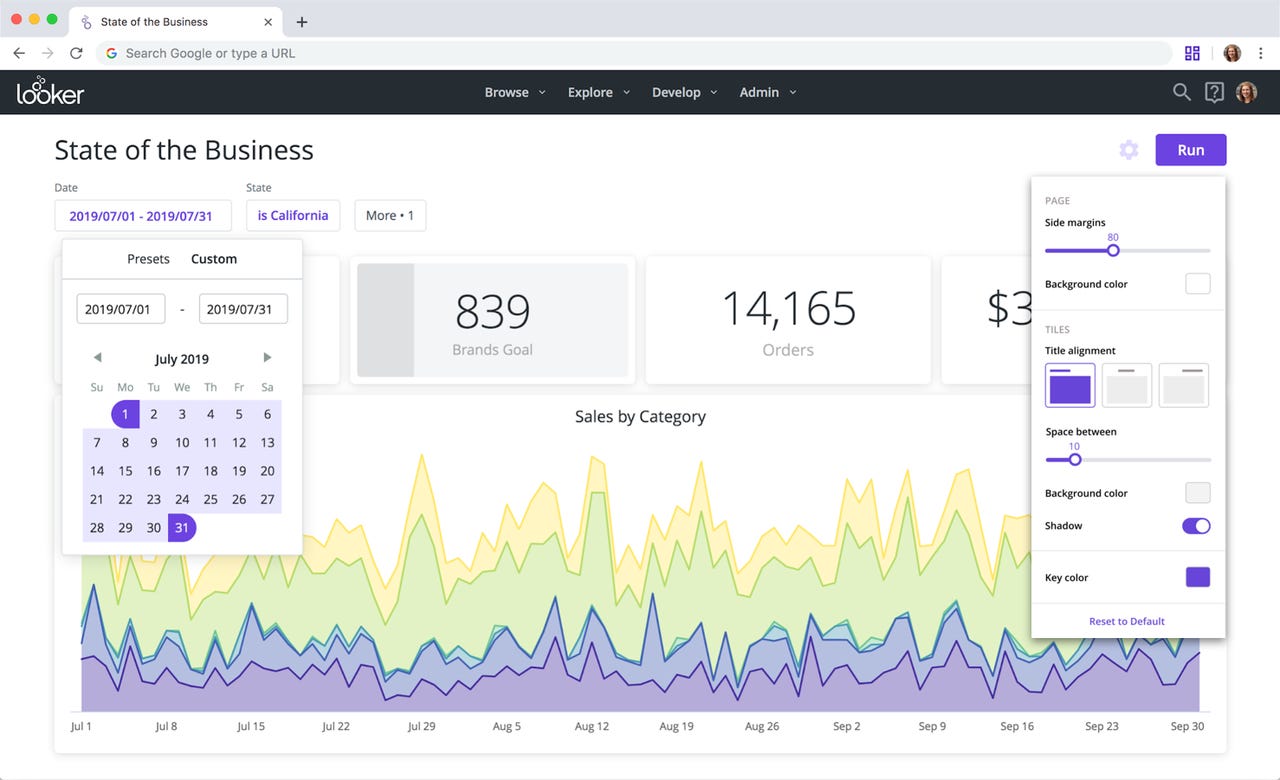Looker 7, first major release in company's Google era, announced


Looker 7 features revamped visualizations, with enhanced filtering and formatting capabilities
From its JOIN user conference in San Francisco today, self-service and embedded BI upstart Looker announced version 7 of its product and platform, the first major release since Google announced it would buy the company, in June of this year. One might think of Looker 7 as the enterprise fit-and-finish release. Splashy, macro-level chunks of new functionality are less of an emphasis than are important capabilities to make Looker more enterprise-suitable.
Also read: Looker 6 announced at Join conference in San Francisco
Also read: Google buys Looker for $2.6 billion, aims to extend its analytics reach, support multiple clouds
Also read: Salesforce-Tableau, other BI deals flow; the tally's now five in a row
For the core experience, Looker has shored up its visualizations, adding enhanced filtering (including cross-filtering between visualizations) and fine-grained formatting capabilities. There's enhanced Slack and other third-party integrations too, not to mention new alerting capabilities, which are often critical in enterprise BI deployments. Looker has also added the ability to generate visualizations directly from the product's SQL Runner, a capability, previously available as a "Labs" feature, that should be popular in lots of corporate dev shops. But there's more than just new user experience features in Looker 7.
Attention: Developers
There's a lot happening on the developer/embedded side, too. For starters, a new embed SDK (software development kit) is here, providing more interactivity than vanilla iFrame techniques. Beyond that, though, Looker will now supply a JavaScript/Typescript SDK for front-end Web developers, a Python SDK for the data science crowd, and Kotlin and Swift SDKs for mobile devs. Looker will even provide the ability for customers to generate their own language-specific SDKs using Swagger codegen-style techniques.
A new developer portal will provide documentation, samples, and API explore tool, blogs, and more. A new Looker Marketplace will allow members of the Looker developer ecosystem to share code and other assets. Despite the name, Marketplace will not provide for commerce/monetization capabilities at this time though the Looker official explained to me that they envision such functionality will come.
Also read: Looker announces developer-friendly platform enhancements
Also read: Looker and Google team up around BigQuery Machine Learning
Is enterprise on your side?
Looker 7 adds a slew of features in the enterprise department:
- A new "connections" feature will provide a managed service for data integration/data engineering, connecting more than 45 data sources to the raw data sources in Looker, according to the company
- Looker will also offer Kubernetes-based managed hosting of its platform on Microsoft Azure, Google Cloud Platform and Amazon Web Services
- "System activity analytics" provides administrator-oriented operational analytics on a customer's Looker deployment itself
- Security certifications for ISO 27001, PCI, HIPAA and SOC 2 Type I (for Google Cloud Platform) are being added
- Premier Success, a new service, will provide personalized guidance, tech support with service level agreements (SLAs), and ongoing optimization support.
Not a bad list! In fact, the roster of new features for Looker 7 reminds me more of an announcement from an enterprise BI company than an analytics startup. And, to be clear, I mean that as compliment.
While Looker 7 is being announced today, it's not yet generally available (GA). That will come by the end of first quarter next year (i.e. calendar 2020), and some features may still be in Beta by that time-frame.